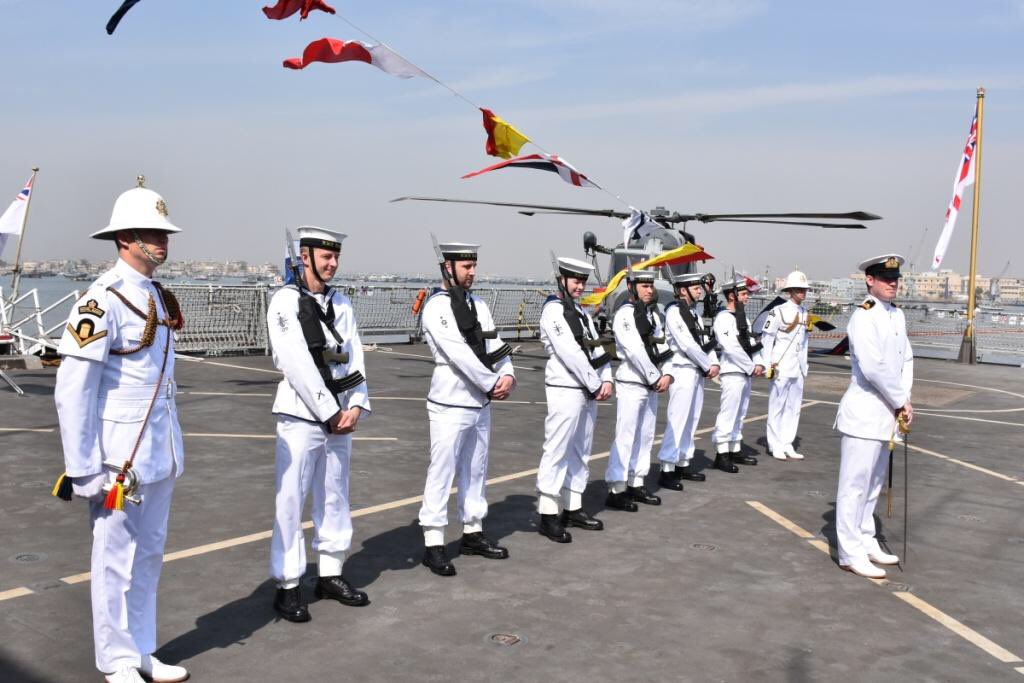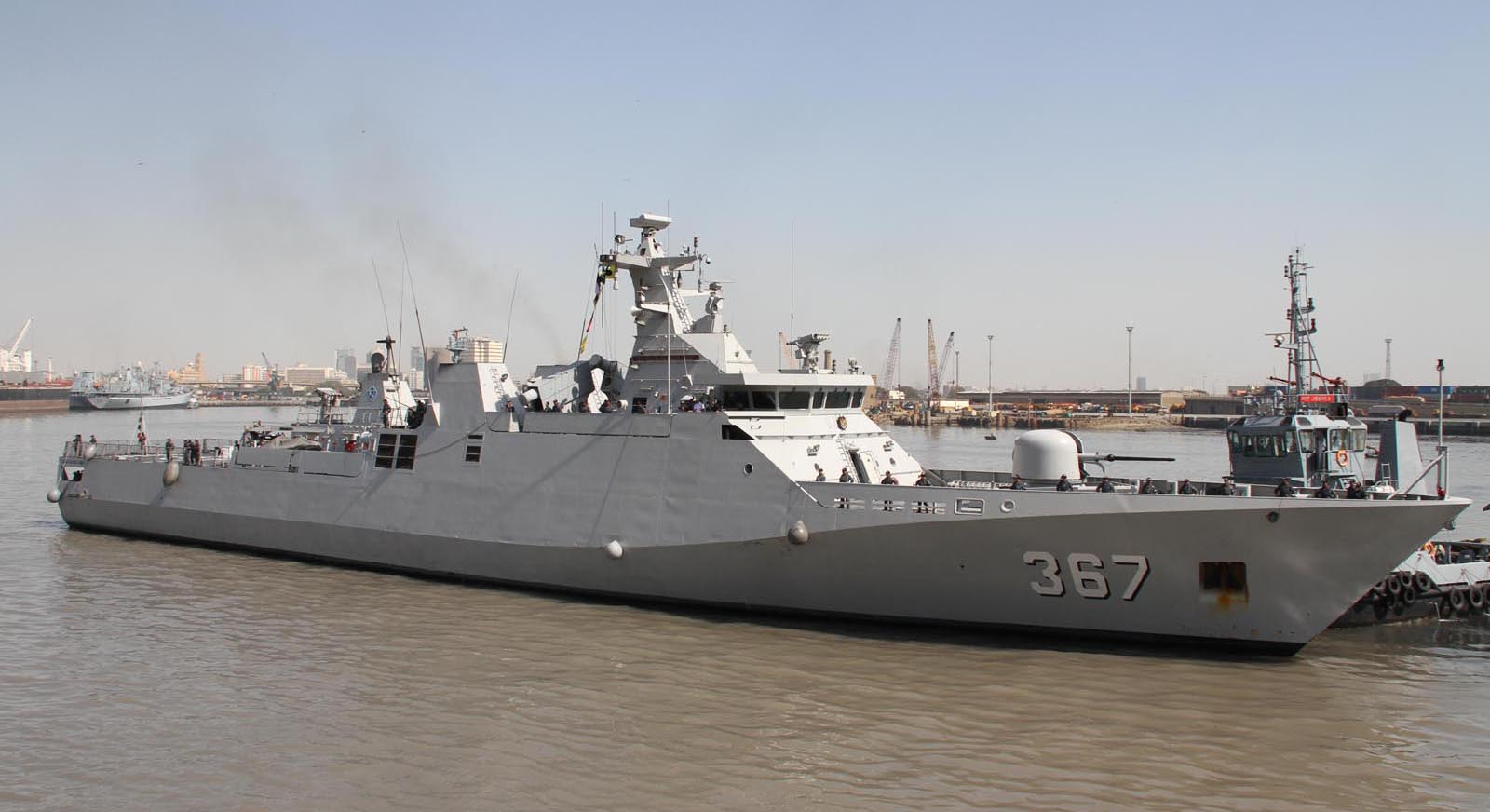How to install the app on iOS
Follow along with the video below to see how to install our site as a web app on your home screen.
Note: This feature may not be available in some browsers.
You are using an out of date browser. It may not display this or other websites correctly.
You should upgrade or use an alternative browser.
You should upgrade or use an alternative browser.
Over 35 countries to participate in 'Aman-17' naval exercise
- Thread starter PDFChamp
- Start date
truthseeker2010
SENIOR MEMBER

- Joined
- Dec 7, 2010
- Messages
- 5,168
- Reaction score
- -8
TOPGUN
PDF THINK TANK: ANALYST

- Joined
- Jun 6, 2006
- Messages
- 8,689
- Reaction score
- 2
- Country
- Location
Is that our tanker in the back round in the last picture ?
Rocky rock
FULL MEMBER

- Joined
- Mar 28, 2010
- Messages
- 1,001
- Reaction score
- 0
- Country
- Location
Is that our tanker in the back round in the last picture ?
Yep that's "PNS Nasr" Replenishment & Fleet Tanker!
Blue Marlin
SENIOR MEMBER

- Joined
- Jul 7, 2015
- Messages
- 6,688
- Reaction score
- 6
- Country
- Location
No it isnt35 nations seem like a logistical nightmare, or was this more as a networking event?
Please read about hosting naval exercises and our capabilities before making baseless assumptions
PDFChamp
FULL MEMBER

- Joined
- Dec 11, 2016
- Messages
- 489
- Reaction score
- 6
- Country
- Location
http://quwa.org/2017/02/15/major-multi-national-naval-exercise-aman-2017-concludes/
Feb 15, 2017 Bilal Khan -
Major multi-national naval exercise AMAN 2017 concludes

Pakistan has concluded AMAN-17 (or AMAN 2017), a major multi-national naval exercise that involved more than 35 countries, on Tuesday, 14 February 2017.
As per Inter Services Public Relations (ISPR), AMAN-17 ended with maneuvers at-sea and a Fleet Revie in the Arabian Sea. Besides naval exercises, AMAN-17 also included a major event – i.e. the International Maritime Conference – as well as a series of seminars, discussions and ship visits.
Discussion:
Foreword: This is not a news story, but a piece for discussion. The details offered in this article are not authoritative pieces of information, but rather, perspectives of the author.
While AMAN is not a new exercise, AMAN-17 was notably large, perhaps the largest of any single Pakistani military exercise in recent years. The Pakistan Navy used AMAN-17 to help drive Pakistan’s foreign relations efforts, namely by promoting the Navy’s participation in multi-national security initiatives (such as Combined Task Force-150 and 151) or Pakistan’s expanding rapprochement with Russia.
However, an exercise of this scale is costly, and with Islamabad and Rawalpindi enabling the Pakistan Navy to implement AMAN-17 at this scale could indicate that the Navy’s prominence has grown.
The driving force behind this surge stems from two sources: Rawalpindi assigning strategic deterrence tasks to the Navy, thus necessitating SLCMs and submarines to carry them. Second, and more importantly, the China-Pakistan Economic Corridor (CPEC) and the need to guard the infrastructure investments made in Gwadar and, in time, the trade that is projected to flow from and to Pakistan.
CPEC – and guarding maritime trade generally – generate two overarching requirements.
First, anti-access and area denial (A2/AD), which is to deny an adversary access to Pakistan’s coasts, not just in terms of using Sindh or Baluchistan to enter the mainland, but to protect Pakistan’s coastal infrastructure, such as ports and shipyards. The main bulk of the Navy’s procurements – i.e. its submarines, FAC and coastal anti-ship missile (AShM) batteries – are centered on A2/AD.
Second, guarding Pakistan’s sea-lines-of-communication (SLOC) (sea-lanes) from criminal activity and, potentially, war-time enemy interdiction. Thwarting war-time interdiction will likely involve Pakistan using a portion of its submarine fleet and reinforcing them with modern surface warships.
Cumulatively, these programs would amount to several billion dollars in procurement expenditure, which is the largest funding package ever allocated for the Pakistan Navy.
Feb 15, 2017 Bilal Khan -
Major multi-national naval exercise AMAN 2017 concludes

Pakistan has concluded AMAN-17 (or AMAN 2017), a major multi-national naval exercise that involved more than 35 countries, on Tuesday, 14 February 2017.
As per Inter Services Public Relations (ISPR), AMAN-17 ended with maneuvers at-sea and a Fleet Revie in the Arabian Sea. Besides naval exercises, AMAN-17 also included a major event – i.e. the International Maritime Conference – as well as a series of seminars, discussions and ship visits.
Discussion:
Foreword: This is not a news story, but a piece for discussion. The details offered in this article are not authoritative pieces of information, but rather, perspectives of the author.
While AMAN is not a new exercise, AMAN-17 was notably large, perhaps the largest of any single Pakistani military exercise in recent years. The Pakistan Navy used AMAN-17 to help drive Pakistan’s foreign relations efforts, namely by promoting the Navy’s participation in multi-national security initiatives (such as Combined Task Force-150 and 151) or Pakistan’s expanding rapprochement with Russia.
However, an exercise of this scale is costly, and with Islamabad and Rawalpindi enabling the Pakistan Navy to implement AMAN-17 at this scale could indicate that the Navy’s prominence has grown.
The driving force behind this surge stems from two sources: Rawalpindi assigning strategic deterrence tasks to the Navy, thus necessitating SLCMs and submarines to carry them. Second, and more importantly, the China-Pakistan Economic Corridor (CPEC) and the need to guard the infrastructure investments made in Gwadar and, in time, the trade that is projected to flow from and to Pakistan.
CPEC – and guarding maritime trade generally – generate two overarching requirements.
First, anti-access and area denial (A2/AD), which is to deny an adversary access to Pakistan’s coasts, not just in terms of using Sindh or Baluchistan to enter the mainland, but to protect Pakistan’s coastal infrastructure, such as ports and shipyards. The main bulk of the Navy’s procurements – i.e. its submarines, FAC and coastal anti-ship missile (AShM) batteries – are centered on A2/AD.
Second, guarding Pakistan’s sea-lines-of-communication (SLOC) (sea-lanes) from criminal activity and, potentially, war-time enemy interdiction. Thwarting war-time interdiction will likely involve Pakistan using a portion of its submarine fleet and reinforcing them with modern surface warships.
Cumulatively, these programs would amount to several billion dollars in procurement expenditure, which is the largest funding package ever allocated for the Pakistan Navy.
Thorough Pro
ELITE MEMBER

- Joined
- Aug 23, 2008
- Messages
- 13,232
- Reaction score
- -21
- Country
- Location
We understand your apprehensions from IN experience where two out of four participating vessels end up colliding with each other.
Pakistan on the other hand has vast experience in conducting large scale exercises.
Pakistan on the other hand has vast experience in conducting large scale exercises.
35 nations seem like a logistical nightmare, or was this more as a networking event?
Angry Studios
FULL MEMBER

- Joined
- Jun 14, 2016
- Messages
- 175
- Reaction score
- 0
- Country
- Location
Turkish SAT Commandos
AMAN-17

AMAN-17
assassin123
FULL MEMBER

- Joined
- Apr 1, 2013
- Messages
- 508
- Reaction score
- -3
- Country
- Location
Lol when did that happenWe understand your apprehensions from IN experience where two out of four participating vessels end up colliding with each other.
Pakistan on the other hand has vast experience in conducting large scale exercises.

And you call this a large scale exercise

Google exercise MALABAR or IFR and you will get an idea on what a large scale exercise looks like
35 nations are participating as you claim and only 7 independent nations have only sent their vessels rest are only represented by diplomats and except 3 big warships all are mainly auxillary vessels or patrol boats.
truthseeker2010
SENIOR MEMBER

- Joined
- Dec 7, 2010
- Messages
- 5,168
- Reaction score
- -8
Lol when did that happen
And you call this a large scale exercise
Google exercise MALABAR or IFR and you will get an idea on what a large scale exercise looks like
35 nations are participating as you claim and only 7 independent nations have only sent their vessels rest are only represented by diplomats and except 3 big warships all are mainly auxillary vessels or patrol boats.
Malabar was a tri-nation exercise and its sea phase was in sasebo japan(2016).
Similar threads
- Replies
- 48
- Views
- 8K
- Replies
- 0
- Views
- 841
- Replies
- 0
- Views
- 1K








